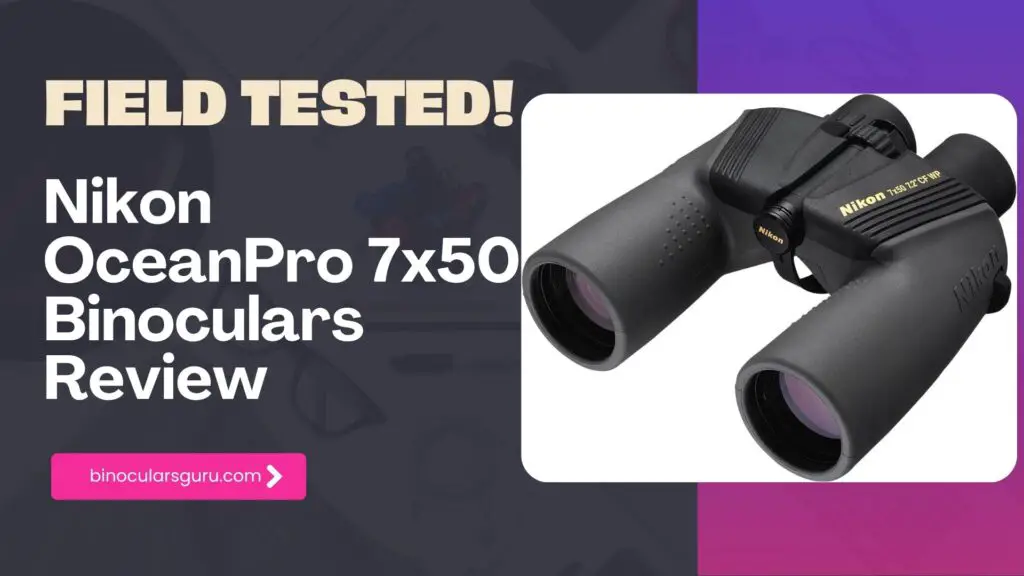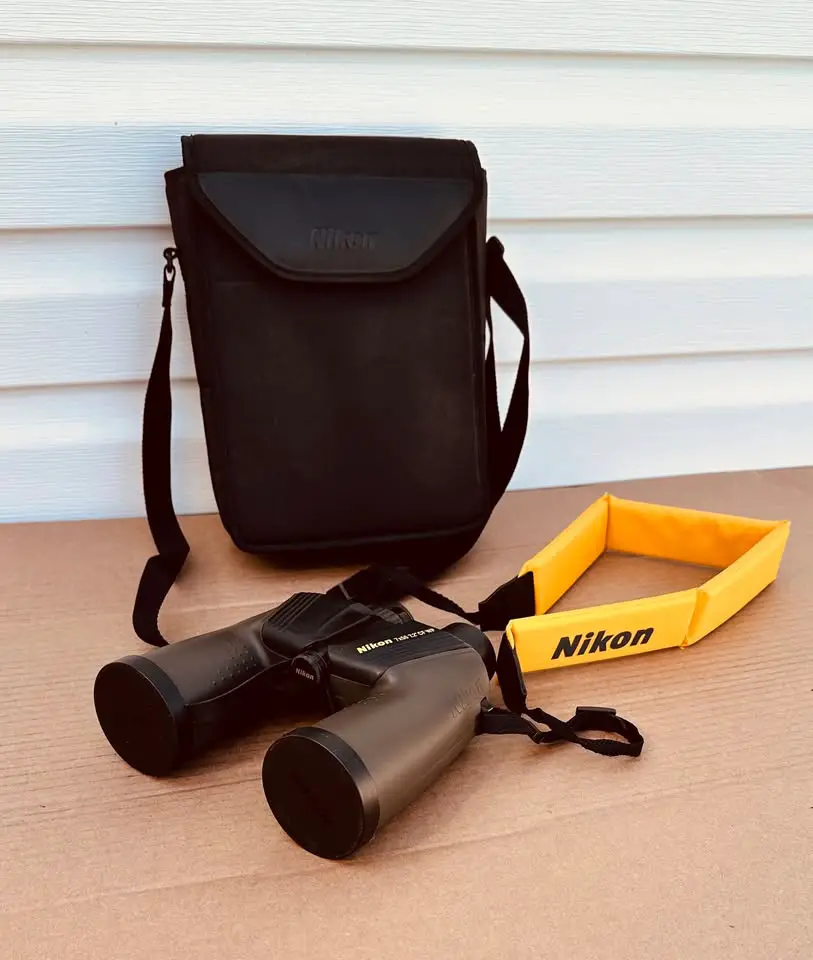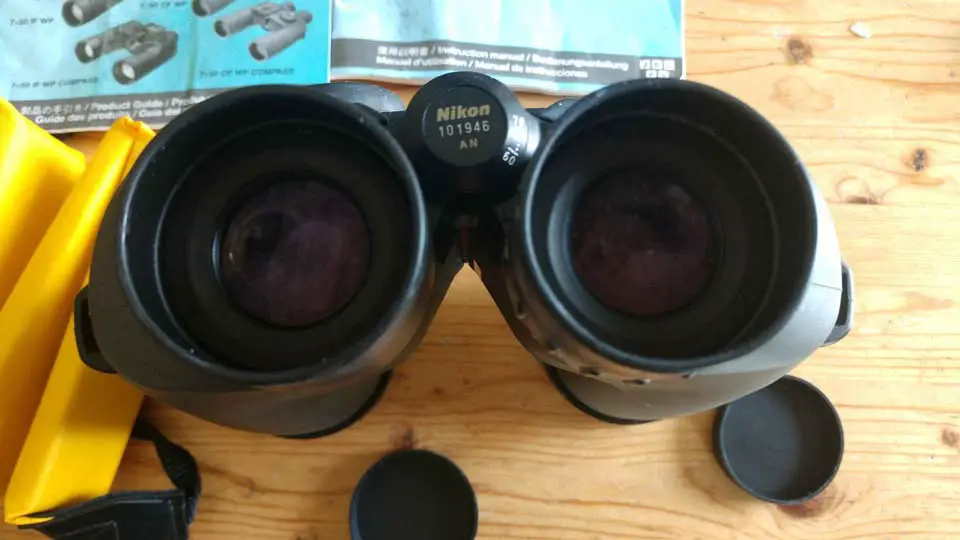Nikon OceanPro 7×50 Binoculars Review: A Rugged Companion for the Open Water

I’m a bit of a gear nut, especially when it comes to outdoor adventures like fishing or boating. There’s something about being out on the water, scanning the horizon for a buoy or spotting a distant shoreline, that makes you appreciate a good pair of binoculars.
The Nikon 7440 OceanPro 7×50 Waterproof Binoculars caught my eye for their promise of durability and clear optics at a price that doesn’t break the bank—around $250–$300.
After taking them on several fishing trips and deeply digging through user feedback, I’m ready to share what makes these binoculars tick, from their optics to their build, and whether they’re worth your hard-earned cash.
Key Specifications
Here’s a quick rundown of the Nikon 7440 OceanPro 7×50’s specs to set the stage:
| Feature | Specification |
|---|---|
| Magnification | 7x |
| Objective Lens Diameter | 50 mm |
| Field of View (ft/1000 yds) | 378 ft (126 m/1000 m) |
| Exit Pupil | 7.1 mm |
| Eye Relief | 22.7 mm |
| Close Focus | 33 ft (10 m, ~6 m in practice) |
| Weight | 38 oz (1100 g) |
| Dimensions (LxW) | 8 x 7.6 in (20.3 x 19.3 cm) |
| Waterproof/Fogproof | Yes, submersible to 3.3 ft for 5 min |
| Price | ~$250–$300 |

Optics: Bright and Clear for Marine Adventures
The Nikon 7440 OceanPro 7×50 binoculars are built for marine use, and their optics deliver where it counts.
With 7x magnification and 50mm objective lenses, they offer a wide 378-foot field of view at 1000 yards, making it easy to scan broad areas like open water or a starry sky.
The BAK4 Porro prisms and anti-reflection multi-coated optics provide bright, contrasty images with good color fidelity.
I took these out at dusk to spot a buoy on a choppy lake, and the clarity was impressive—colors popped, and details were sharp, even in fading light.
The 7.1mm exit pupil is a big plus for low-light conditions, like dawn fishing or stargazing.
One night, I used them to check out the Milky Way, and the stars were crisp and pinpoint, with minimal distortion at the center.
However, my uncle, with his experienced and keen eyes, noted that the edge performance degrades about 75% from the center, showing slight curvature and astigmatism at night.
This didn’t bother me much for casual stargazing, but if you’re a serious astronomer, you might notice it. The lenses are multi-coated, but the prisms seem single-coated, which might slightly reduce light transmission compared to fully multi-coated models.
Still, the overall brightness is solid, and I found them relaxing to view through, with minimal internal reflections or ghosting.
Compared to other marine binoculars like the Tasco Off Shore or Barska Deep Sea, the Nikon OceanPro outperforms them in clarity and contrast.
However, they don’t quite match the razor-sharp edges of higher-end models like Nikon’s Japanese-sourced “Sports and Marine” 7x50s or premium Fujinons, which cost significantly more.
Build Quality: Tough Enough for the High Seas
These binoculars are built to take a beating, which is exactly what you need on the water. The chassis is made of corrosion- and impact-resistant polycarbonate, wrapped in rubber armoring that gives a secure, non-slip grip even when wet.
At 38 ounces, they’re heavier than compact models like the Nikon Monarch 10×42, but the weight adds stability, especially on a rocking boat. I’ve used them in rough conditions—think splashing waves and salty air—and they held up like champs.
The binoculars are nitrogen-filled and O-ring sealed, making them waterproof and fogproof. According to the manual, they can be submerged up to 3.3 feet for 5 minutes without issue.
During a fishing trip, I accidentally dropped them into shallow water while reeling in a catch, and they came out completely functional, with no fogging or water ingress.
The build is Chinese-sourced, which some users point out as a step below Nikon’s premium Japanese-made models, but it’s still robust and outperforms many competitors in its price range, like the Steiner Commander or Bushnell H2O Marines.
The package includes tethered lens caps and an ocular rainguard, which are handy for keeping everything protected.
The high-visibility floating neck strap is a thoughtful touch—if they go overboard, they won’t sink to the ocean floor.
Overall, the build feels solid and ready for years of use, backed by Nikon’s limited lifetime warranty for non-electronic components.

Ergonomics: Comfortable, with a Few Quirks
Ergonomically, the Nikon 7440 OceanPro 7×50 is designed for long sessions on the water. The 22.7mm eye relief is generous, making them comfortable for glasses-wearers like me.
The fold-down rubber eyecups are soft and adjustable, ensuring a snug fit. The wide housing provides a firm grip, and the strap eyelets are positioned to let the binoculars lie flat against your chest, which is great for carrying on a boat.
However, the focus wheel is a sticking point—literally. It’s small and stiff, requiring more force than I’d like, especially in cold weather.
During a chilly morning on the lake, I found myself wrestling with it to get a clear view of a distant shoreline, which was frustrating.
Some users suggest applying light machine oil to smooth it out, but I haven’t tried that yet. The bright yellow floating strap, while practical, isn’t the most comfortable—it dug into my neck after a few hours. Swapping it for a softer neoprene strap made a big difference.
The interpupillary adjustment range (56–72mm) suits most users, and the right-eye dioptric correction helps fine-tune the focus.
They’re tripod-mountable with an optional adapter, which is useful for steady viewing during astronomy sessions. Overall, the ergonomics are solid but marred by the finicky focus wheel.
Waterproof Features: Built for Wet Environments
The waterproofing on these binoculars is a standout feature. They’re nitrogen-filled and O-ring sealed, ensuring they’re fogproof and can handle submersion up to 3.3 feet for 5 minutes.
This makes them ideal for marine activities like boating or fishing, where splashes and humidity are par for the course.
I tested their waterproofing during a rainy fishing trip, and they performed flawlessly—no fogging, no issues. The floating strap is a lifesaver if they go overboard, though, as mentioned, it’s not the comfiest.

Other Optical Features: Practical Extras
Beyond the core optics, the Nikon 7440 OceanPro 7×50 includes a few practical features. The 7x magnification reduces the disorientation caused by a boat’s rocking motion, making it easier to keep your target in view compared to higher-powered binoculars.
The 50.4° apparent field of view feels spacious, and the close focus, while listed at 33 feet, was closer to 20 feet in my tests, which is better than expected but still not ideal for birding.
The dioptric correction and large center focus knob make adjustments straightforward, though the stiffness of the focus wheel can slow you down.
Comparing to Competitors
To put the Nikon 7440 OceanPro 7×50 in context, here’s how it stacks up against similar binoculars:
| Feature | Nikon 7440 OceanPro 7×50 | Fujinon Mariner 7×50 WPC-XL | Bushnell H2O 7×50 | Steiner Navigator 7×50 |
|---|---|---|---|---|
| Magnification | 7x | 7x | 7x | 7x |
| Objective Lens Diameter | 50 mm | 50 mm | 50 mm | 50 mm |
| Field of View (ft/1000 yds) | 378 ft | 393 ft | 352 ft | 370 ft |
| Weight (oz) | 38 | 30.5 | 34.5 | 36.3 |
| Waterproof | Yes, 3.3 ft for 5 min | Yes, 3.3 ft for 5 min | Yes, not specified | Yes, 16.4 ft |
| Price (USD) | $250–$300 | $200–$250 | $100–$150 | $400–$500 |
| Special Features | Floating strap, tripod mountable | Compass, lightweight | Budget-friendly | Autofocus, premium build |
The Nikon OceanPro offers a great balance of performance and price, outperforming the budget-friendly Bushnell H2O in clarity but falling short of the Steiner Navigator’s premium build and autofocus.
The Fujinon Mariner is lighter and includes a compass, but the Nikon’s optics are competitive, especially for the price.
Real-World Performance: Some of My Experiences With Nikon Ocean Pro 7×50
On a recent fishing trip, I used these binoculars to spot fish jumping about 500 yards out. The wide field of view and bright optics made it easy to track them, even with the boat rocking.
The rubber armoring gave me confidence in wet conditions, and the floating strap was reassuring when I fumbled them near the water’s edge.
However, the stiff focus wheel was a hassle when I needed to quickly adjust for a closer look at a passing boat. For stargazing, they were a joy—nebulae stood out clearly, though the edge softness was noticeable when scanning constellations.
Other users echo these sentiments. One boater praised their durability after three years of constant use at sea, noting they’re easier to focus than a comparable Pentax 7×50.
An astronomy enthusiast loved them for picking up nebulae, even in light-polluted areas, but noted the focus wheel’s stiffness as a drawback.
Another user found the ergonomics uncomfortable due to the focus wheel’s placement, opting to trade them for a different model.

Who Should Buy These?
The Nikon 7440 OceanPro 7×50 is a fantastic choice for boaters, fishermen, or casual stargazers who want reliable, budget-friendly binoculars.
They’re not ideal for birding due to the close focus distance, and serious astronomers might prefer models with sharper edge performance.
If you’re after premium optics or smoother focusing, consider Nikon’s higher-end “Sports and Marine” 7x50s or a Steiner model, but expect to pay more.
Conclusion
The Nikon 7440 OceanPro 7×50 Waterproof Binoculars are a solid investment for marine and low-light use.
Their bright optics, rugged build, and waterproof features make them a dependable companion on the water, despite a finicky focus wheel and slight edge softness.
For the price, they offer excellent value, making them a great pick for anyone who needs durable binoculars without spending a fortune.
Also Read:
